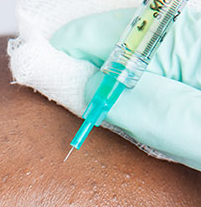Sagging cheeks in 20's
Cheeks are a vital part of a person's facial appearance that can be manipulated to establish facial equilibrium. When cheek volume decreases or cheekbones become more visible, it may be a sign of underlying health problems, including inadequate nutrition, vitamin deficiencies, immune system disorders, and more.
Avoiding sagging cheeks essentially requires an understanding of the factors that contribute to their development and the methods available for dealing with the problem both at home and with medical assistance.
Why do cheeks become saggy at 20's?
Cheek volume decreases with aging. This makes the cheek region, particularly the area beneath the eyes and along the jawline, look saggy. Your cheeks may be drooping as a result of aging or weight loss if they no longer have any thickness or contour. Additionally, if the swelling from the accident has reduced but the cheek fullness has not yet been recovered, they may seem sunken on one side of the face.

What are the causes of saggy cheeks at 20's?
As people age naturally, the cheek area may lose volume. Sagging cheeks, however, are also typical in people who have lost weight and in women whose hormonal changes impair the facial tissues responsible for supporting the face.
These things can make your cheeks droop:
Hormonal Shifts
When hormones alter the size and structure of the cheek muscles, some people notice a sagging effect on their cheeks. As women become older and enter menopause, their muscular mass typically decreases, which causes their cheeks to sag.
Using tobacco products
Because smoking cigarettes regularly and for a long time can harm the facial structure and muscle fibers, there is a potential that it will lead to cheek sagging. Smoking cigarettes regularly weakens the cheek muscles, which can make it difficult for heavy smokers to chew or smile.
Long-Term Illness
Sagging cheeks can be the result of muscle degeneration or wasting due to medical conditions or chronic illnesses such as hypoglycemia, cardiovascular disease, malignancy, and Aids. An uneven diet that provides poor nourishment can lead to malnutrition, which can lead to cheekbone protrusion.
Cheekbones may occasionally protrude as a result of bone loss in the skeletal face, which is prevalent in patients with osteoporosis or other disorders that cause bones to degrade rapidly over time.
Nerve damage
When someone has genetic craniofacial defects or when their cheek muscles have been affected by an injury for example a stroke, they may occasionally have facial paralysis and develop cheek drooping.
What are treatment options for saggy cheeks at 20's?
You may appear older and feel less confident if your skin is sagging, particularly on your face. The majority of the time, sagging skin requires cosmetic surgery, so it's not something you can cure at home. To solve the problem, consider getting a cheek lift. A minimally invasive surgery called a cheek lift that can improve your appearance by treating sagging cheeks. The procedure is sometimes called a "mini-cheek lift" because it makes your whole face look better.
A cheek lift is a four-step process that doesn't take too long. In order to raise your cheek pad, the surgeon will first create a tiny incision under your eye. After that, the eye muscle is stretched further and fixed into its new position. If you keep your weight the same and don't make any other significant adjustments, the effects will persist for over ten years.
Other Options
Face fillers:
This procedure will add volume beneath the skin of the cheeks, allowing them to rise again and reestablish their youthful definition. In many cases, fillers like Juviderm® XC or Restylane® perform quite effectively to augment the cheeks and address sagging skin.
Fat transfer:
A doctor can perform a cheek augmentation by relocating fat from other areas of the body (perhaps through liposuction) to the cheeks. The fat is injected subcutaneously, where it will eventually grow and plump up the sagging skin, making the affected areas look less hollow than they actually are.
Cheek implants:
Because it involves surgery, this is arguably the most obvious option for restoring cheek volume.
 Reviewed by Simon Albert
on
August 25, 2022
Rating:
Reviewed by Simon Albert
on
August 25, 2022
Rating:











